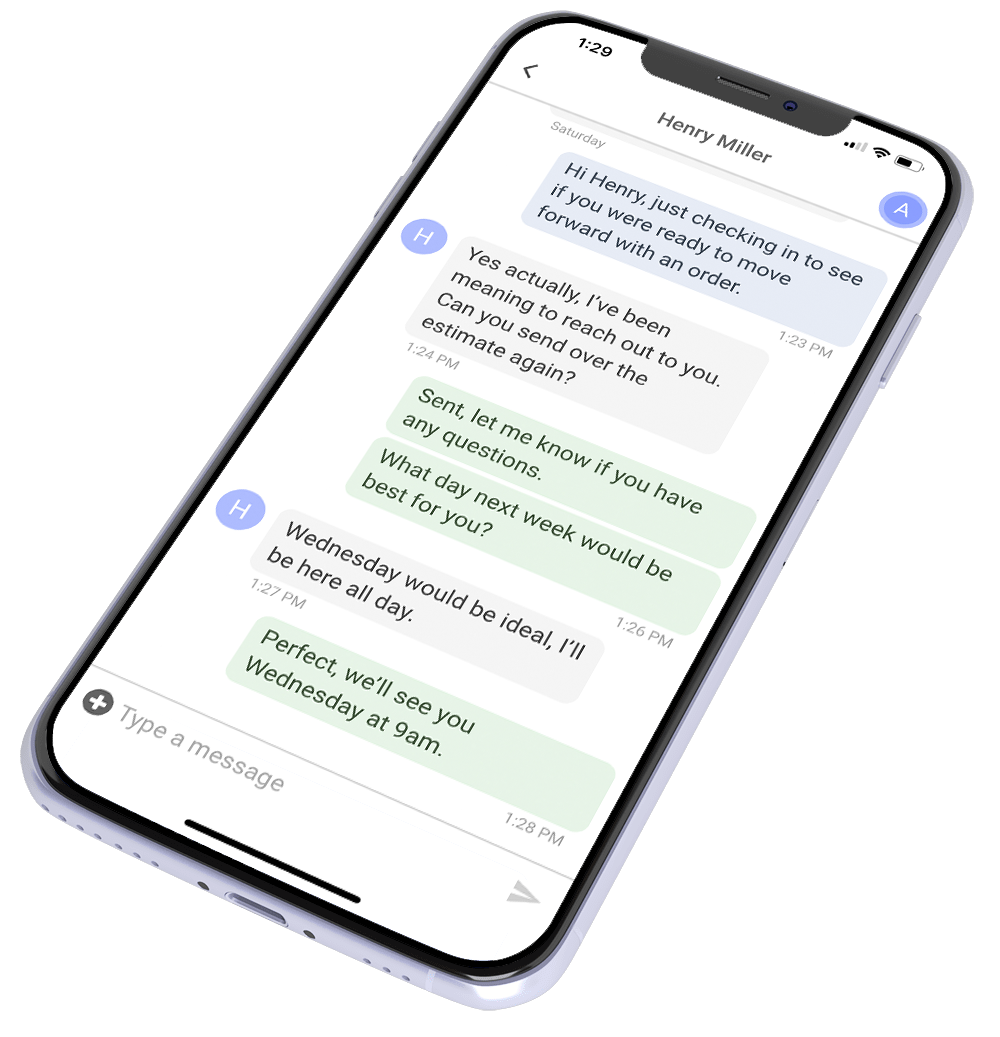
Switching roofing CRMs is like handing over your truck keys and hoping it comes back in one piece. You know it’s time for a change, but the fear of losing leads, missing deadlines, or sales slipping through the cracks is enough to make you hesitate. Your system isn’t cutting it. It’s slow, clunky, and making things worse. Projects pile up, your sales team struggles, and customer calls? Half of them fall through.
You’ve felt the strain. Whether it’s lost time or missed deals, one thing is clear: this can’t go on. The real question isn’t if you need a new CRM, but how to switch roofing CRMs without disrupting your business. The transition should be smooth—no downtime, no confusion, no piecing things back together late at night.
It might seem impossible, but it’s not. There’s a way forward, and a CRM switch won’t just fix your issues—it’ll streamline everything from quotes to follow-ups, giving you the competitive edge you need. Read on to learn how to make this shift without slowing down your business.
Planning the Transition
A solid plan is your lifeline. Without one, switching CRMs can turn your business upside down—jobs get missed, leads vanish, and things spiral out of control. But with the right plan, the switch happens quietly, with your business running smoothly the whole time.
Start with a Clear Roadmap
You don’t need anything fancy, just a clear path. Break the process into phases. First, back up your data—losing it would be a disaster. Then, evaluate your CRM options and make sure they’re ready to go. Plan time for training, so your team is prepared before the old system is gone. Set a reasonable pace. Rush, and things will unravel.
Delegate the Load
Don’t try to handle it all yourself. Assign your IT person to manage data migration and have a manager oversee training. Dividing tasks keeps your focus where it belongs—running the business.
Choose the Right Time
Timing is everything. The offseason or a slow period is ideal. If you’re buried in jobs, forcing a CRM switch feels like fighting against the tide. Pick the right moment, and the transition will be seamless.
Choosing the Right CRM for a Smooth Transition
Not all CRMs are the same. Some will make the switch harder, while others slide in effortlessly. Look for one that integrates with your current tools—quoting, accounting, and marketing. Compatibility is key.
Ease of use matters too. Your team should get comfortable with it fast. The simpler the setup, the sooner they can get back to work. You don’t want them stuck learning a new system instead of closing deals.
Support is another dealbreaker. This isn’t a DIY project. Pick a CRM with strong onboarding and support. A provider who guides you through setup, answers questions, and handles hiccups will save you time and frustration.
Finally, make sure it offers essential features. Data import tools make migration easier, templates speed up quoting, and automation keeps everything on track. These features make the transition smooth and free your team to focus on what matters—running the business.
If you want to learn more, check out our article about four features all good roofing CRMs must have.
Preparing for Data Migration and Minimizing Disruption
Data migration is like moving everything out of a house before a remodel—customer lists, project histories, job estimates. Every piece of data must make the trip safely, or you’ll be flying blind on future jobs. You’re not just moving data; you’re moving the lifeblood of your business.
To ensure success, start by auditing your data. Clean it up. Outdated or incomplete info should be tossed, and everything else double-checked. Clean data moves faster and causes fewer headaches.
Next, create backups. Tech can fail, so save everything—customer details, invoices, and estimates—in a secure location. This safety net will keep you from losing sleep (or money) if something goes wrong.
Work with your CRM provider—they’ve done this before. Many offer full migration services. Lean on their expertise to avoid doing it all alone.
Before going live, test the migration with a small batch of data. Catch any snags early, and fix issues before they cost you time or customers.
Avoiding Downtime
Downtime isn’t just frustrating—it costs money. When schedules, leads, and updates are out of reach, the entire operation grinds to a halt. Crews get delayed, jobs run late, and customers start asking questions. Time is money, and downtime drains both.
Stagger the rollout instead of flipping the switch all at once. Testing the new CRM while keeping critical tasks on the old system minimizes the risk of major disruptions. If something goes wrong, you still have a fallback.
Switch during off-peak hours—nights, weekends, or early mornings. This gives you breathing room to address any issues before the workday begins.
Lastly, run both systems side by side for a week or two. The old CRM serves as a safety net while the new one gets up to speed. If a problem arises, your old data is still accessible, reducing the need for last-minute scrambles.
Training Your Team and Backing Up Data
A smooth CRM switch relies on your team. Early training prevents bottlenecks and keeps everyone ready when the new system goes live. Without training, you’re risking delays, confusion, and costly errors. Provide clear resources—tutorials, manuals, or webinars from the CRM company. Whether it’s a video or a step-by-step guide, these tools help your team learn at their own pace.
But theory isn’t enough—let them practice. Give your crew access to the new system early with real or sample data, so they can get comfortable without the pressure of live jobs. This practice helps them adjust smoothly and minimizes mistakes.
To further support the transition, designate a few team members as “CRM champions.” These quick learners can assist others and reduce confusion, acting as go-to experts.
Track progress along the way. Check in regularly to identify weak spots, address them early, and keep things running smoothly.
Backup and Contingency Plans
Mistakes with data can cost days or even sales. A backup plan safeguards your business from disaster. Schedule regular backups during the switch, covering both your old CRM’s data and any new info added to the new system. Daily backups ensure nothing falls through the cracks.
Consider offline backups too. Save key data to an external drive or a secure cloud service that’s disconnected from your main system. If something goes wrong, you’ll have a safe copy of your data to restore.
After migration, don’t assume everything transferred perfectly. Validate the data to ensure nothing’s missing. It’s easier to catch errors now than deal with them months later.
Lastly, prepare for the unexpected. If things go wrong, restore your latest backup immediately and contact your CRM provider for support. The faster you act, the less impact any hiccup will have.
Integrating the CRM
Integrating your CRM with other tools isn’t just helpful—it’s a game-changer. When systems talk to each other, manual errors drop, and you save hours by avoiding repetitive tasks. Seamless integration cuts down on mistakes and streamlines your work.
Start with accounting and invoicing software. Your CRM should sync with programs like QuickBooks so quotes, payments, and records flow smoothly. Next, ensure your CRM links with your marketing tools—email platforms and social media—so lead generation and automated campaigns run efficiently.
Don’t forget estimating and quoting tools. Integrating these allows you to bid on jobs without hopping between platforms, speeding up the process and reducing errors.
When setting up, link each tool one at a time. Test small batches of data to confirm everything works as expected. No surprises. Once it’s all running, train your team to use these integrations, saving more time and effort.
Managing Costs and Ongoing Support
Switching CRMs isn’t just about paying for the subscription. Hidden costs—implementation fees, training, and integration expenses—can add up quickly. Understanding all costs upfront is key to avoiding surprises. Know where every dollar goes before you dive in.
Watch for hidden expenses beyond the obvious fees. Downtime and productivity loss during the switch can chip away at your budget. If your team spends hours learning the new system, that’s time not spent on the job.
However, keep the bigger picture in mind: long-term savings. A streamlined CRM saves you time, reduces errors, and keeps projects on track. The savings down the road should easily justify the upfront investment.
Post-Launch Support and Maintenance
The work doesn’t stop once your CRM is up and running. Even with a smooth launch, issues can arise—systems glitch, new features roll out, or team members hit snags. That’s why ongoing support is crucial. With it, you’re never stuck dealing with problems alone.
To ensure you have proper support, evaluate the CRM provider’s customer service before committing. Do they offer chat, phone, or email support? How quickly do they respond? You need fast, reliable help when challenges pop up.
Encourage your team to keep learning after launch. Make use of the CRM’s training resources, webinars, and updates. Staying on top of new features and changes will help your business run smoothly and get the most from the system.
Regular CRM reviews are a must. Check-in with your team to see how the system is performing and whether any adjustments are needed. Continuous improvement keeps your operations efficient and helps the CRM adapt as your business grows.
Conclusion: How to Switch Roofing CRMs
Switching CRMs may seem daunting, but with the right plan, it’s a leap that will push your business forward. By planning the transition, managing costs, and securing ongoing support, every step you take now prevents headaches later. A better CRM isn’t just a tool—it’s the backbone that keeps your business organized, efficient, and ready to tackle any challenge.
Don’t wait for your current system to cause more problems. Start today. The sooner you switch, the sooner you’ll see the benefits—streamlined workflows, better communication, and saved time. Reach out to the right CRM provider, lock in your plan, and move your business forward without missing a beat.
Ready to see how ProLine can transform your business? Watch our overview video on YouTube to discover the full power of our CRM, or book a demo to see firsthand how ProLine can simplify your roofing operations.
Not sure which CRM fits best? Check out our guide to the 8 best roofing CRMs and find your perfect match!



